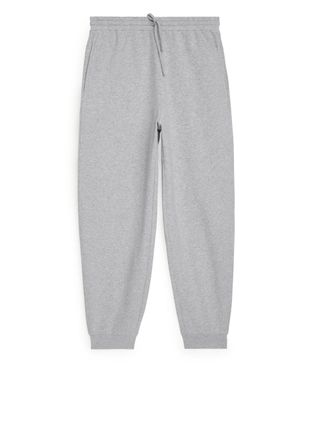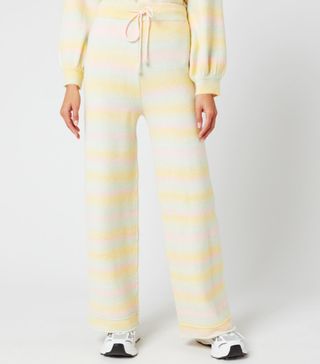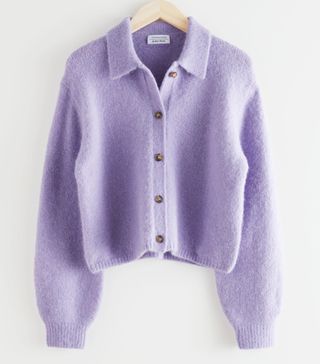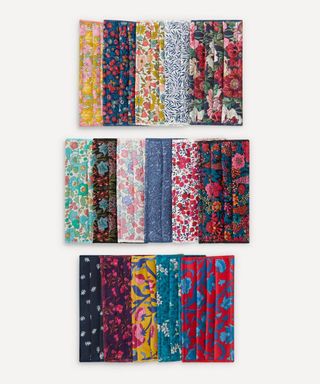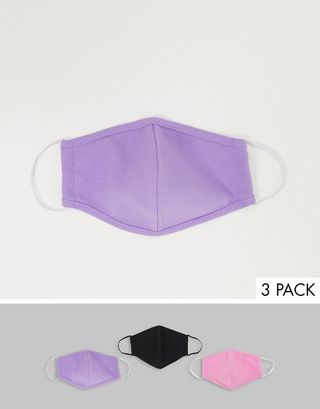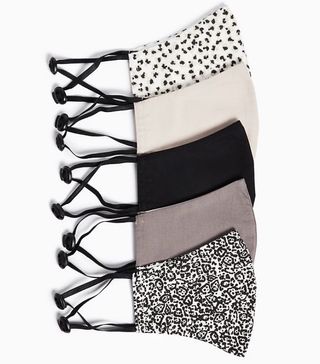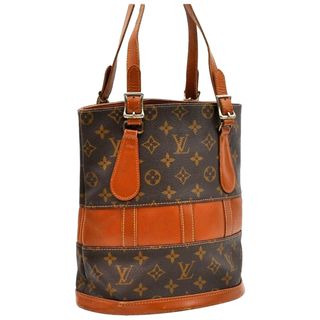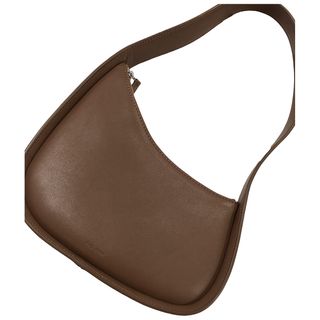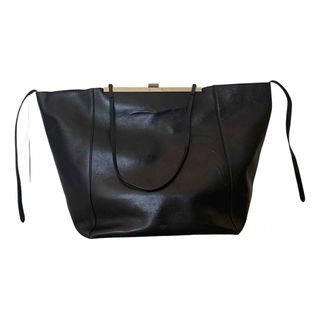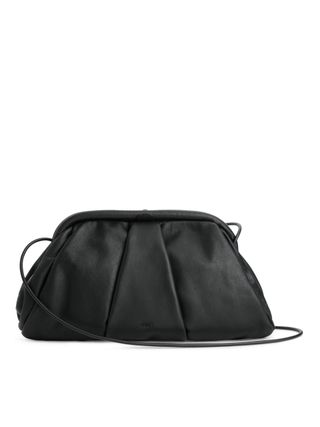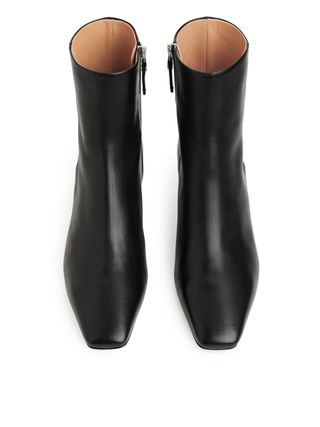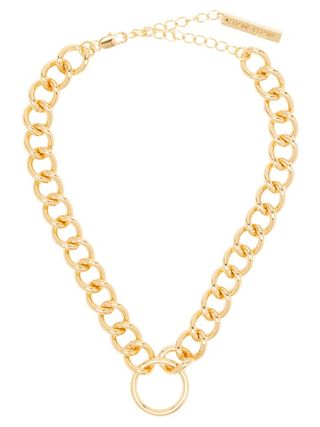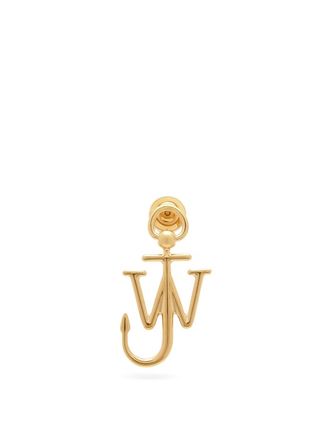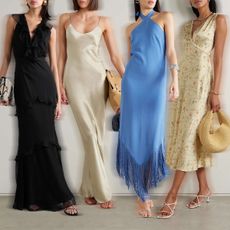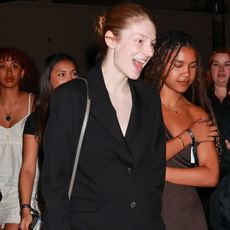How Our Wardrobes Have Changed Forever Due to the Pandemic

In Carolyn Mair's book, The Psychology of Fashion, she says, "in some cases, fashion precedes political change; at other times it follows it." Thanks to the pandemic of 2020, we're very much looking at the latter exception. Overnight, with very little warning, (let's be honest—many of us were working from home and still are and during the height of true lockdown), we've all had to adjust our daily lives and routines. Our need for constricting garments and more formal attire was suddenly made completely obsolete. No more suits, no more jeans, and, in some cases, no more bras.
While some might rejoice in the lack of the aforementioned, it's also meant we have had little reason to dress up—no more sequin dresses for parties, no more wedding dresses either, since they weren't allowed to take place. Conversations about how we shop and why we do it have also become more important with a further emphasis on sustainable clothing. And even now, when some are returning to the workplace, our clothing has had to adapt, even if it's to ensure that you always have a face mask available at all times. It would be flippant to suggest then that even when the pandemic comes to an end, we'll go back to the way we dressed before, as there has been such as a seismic shift in how we live and work.
What, then, has the pandemic really done for our wardrobes? How has it really changed the way we dress, when we no longer have the "normal" rules we usually adhere to? While I'm sure you saw the meme doing the rounds a few weeks into lockdown--a picture of a pope—with all the paraphernalia that comes with that getup—and a line underneath that read: "Me, coming out of lockdown, with all the stupid shit I ordered online”. But honestly, did you really order anything that wasn't useful?
While we might no longer opt for full-on suits, there are still plenty of Zoom calls to consider, and we're all ensuring that we're more careful with money, which has also changed the way we dress and how we invest in fashion. I spoke to a variety of fashion industry insiders about how this has manifested. From Lyst’s report on what people have been searching—a great way to see how people are shopping—to Sophie Hersan, founder of resale site Vestiaire Collective, which has seen soaring sales, as well as Natalie Kingham, fashion and buying director at Matches Fashion, and Anna Teurnell, head of design at Arket, here’s exactly how our way of dressing has completely changed, and potentially for good.
Comfort

I didn't and don't spend all day in sweatpants but I'd be lying if I said I didn't get changed into them to moment I finish work at 6 p.m. and I know I'm not alone. According to Lyst, in April, global searches for sweatpants "grew an incredible 123% compared to the same season last year, with cotton, distressed and tie-dye becoming the most popular search terms."
Teurnell confirmed that comfort is key for customers right now. "Our collections at Arket are for the everyday life and very versatile, so far they have seemed to still meet our customer's needs. But of course, pieces like great loungewear and clothes that are stylish but not too restricting has become even more important."
Face Masks

Now that face masks are a requirement in the UK, we’ve seen a shift from less medical-looking versions to more fashionable styles.
Lyst has seen an incredible 822% globally in searches for face masks. The Off-White logo mask is the most searched brand when it comes to fashionable face masks but there was another interesting piece of data: "searches for alternative face coverings such as scarves also grew 50% since January. Demand for silk scarves is currently up 22% month-on-month, at a time when the seasonal demand for this category would be much lower."
Corroborating the silk scarf data is Hersan revealed, "from a product perspective, interest in scarves, both silk options from Hermès +68% and Louis Vuitton’s +23% show that our community are seeking face mask alternatives."
Secondhand Fashion
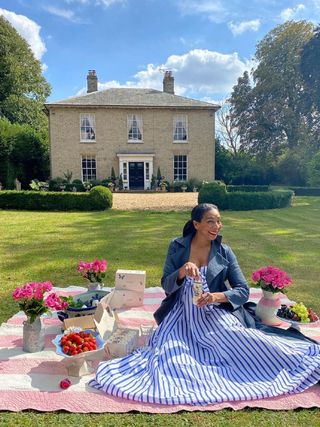
One of the biggest resale sites, Vestiaire Collective, revealed in its The Smart Side of Fashion report that COVID-19 caused shoppers to evolve their way of interacting online. They saw a huge "570% increase in our members searching for new people to follow and the number of daily average comments on items increased by 88% since the same period last year. We also saw an increase in sellers depositing items over the summer period, there was a 100% increase in deposits and a 144% increase in orders compared to the previous year."
I also asked what might happen with re-sale over the next year, if Hersan could predict and her answer was very interesting. "We conducted a global survey exploring consumer awareness," revealed Hersan. "And attitudes about resale, and over 40% said they now buy and sell more pre-owned clothing than five years ago. I believe resale platforms will continue to experience significant growth over the next few months, we can see consumers are shifting away from fast fashion and moving towards building a unique sense of style in a more eco-friendly way. This is so encouraging and hopefully, we can build back a more sustainable system, our focus will be on promoting the benefits of circular fashion and building on our already existing community of fashion activists."
But this isn't just a case of Vestiaire becoming more popular, Lyst also reported a similar trend with "fashion searches that include words such as "vintage" and "secondhand" rising significantly.
Investment Items

This is perhaps the most surprising category on this list, as I know plenty of people are spending less, thanks to job uncertainty. That said, nearly everyone I spoke to revealed that consumers are still willing to invest, provided it will last. Hersan said at Vestiaire Collective, "we have seen deposits double over the summer, with pieces being sold from popular designer brands such as Gucci, Louis Vuitton, Prada, and Burberry."
And Kingham told me how at "the peak of lockdown we saw an increase in sales of heritage handbags such as the horse bit from Gucci and the quilted cassette from Bottega Veneta, as our customer was searching for investment items that are timeless."
And if you don't have designer budgets available, even on the high street consumers want classic pieces that will last. Teurnell told me how she thinks that while we crave comfort, there's still a demand for pieces that have a |high design level without being too trend-driven. Clothes that will make you feel good, look good, and that are at the same time timeless and long-lasting are good investments."
Zoom-Friendly Items
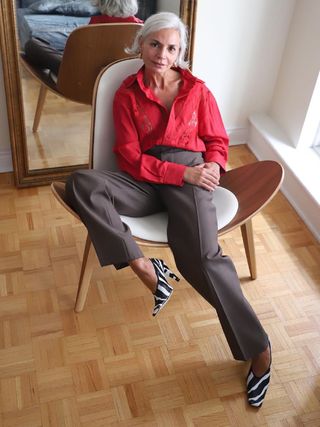
You might be tired of endless Zooms, but that doesn't mean your wardrobe has to look like you'd rather be elsewhere. Clearly, our need to be well-presented on screen has trumped any of our ennui. While Lyst's data suggests our demand for suits and blazers is decreasing, we are still after tailoring, just a more relaxed version. And terms such as "oversize" and "loose-fitting" are more popular, say Lyst.
Another, perhaps surprising theme that has increased in popularity since the pandemic began is fine jewellery. Kingham told me how Matches Fashion's fine jewellery category has increased in popularity. The site's May sales broke records with a +380% increased vs last year. "We have seen a shift here as customers who would before wear fine jewellery for special occasions are now combining fine jewellery pieces with their everyday looks to elevate a cashmere jumper or classic white shirt," says Kingham.
Next up, the biggest autumn/winter 2020 fashion trends to know.
-
 Numbers Don't Lie: These Are the 6 Best-Selling Givenchy Bags of All Time
Numbers Don't Lie: These Are the 6 Best-Selling Givenchy Bags of All TimeReceipts have been pulled.
By Jasmine Fox-Suliaman
-
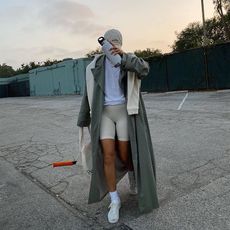 The Anti–It Bags Fashion People Are Just Really Into
The Anti–It Bags Fashion People Are Just Really IntoThey have major staying power.
By Kristen Nichols
-
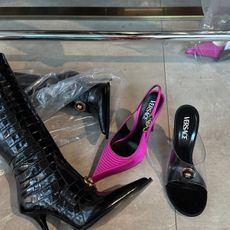 I'm Making Some Designer Investments This Year—30 Items I'm Eyeing From MyTheresa
I'm Making Some Designer Investments This Year—30 Items I'm Eyeing From MyTheresaNo gatekeeping here.
By Grace O'Connell Joshua
-
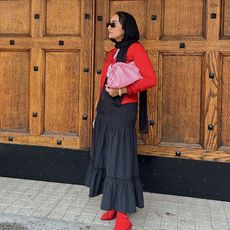 Fashion Month Is My Super Bowl: 27 Show-Worthy Picks I'm Adding to the Wish List
Fashion Month Is My Super Bowl: 27 Show-Worthy Picks I'm Adding to the Wish ListGo sports!
By Yusra Siddiqui
-
 19 Epic Under-$250 Finds I Just Added to My Mytheresa Cart
19 Epic Under-$250 Finds I Just Added to My Mytheresa CartLittle luxuries.
By Allyson Payer
-
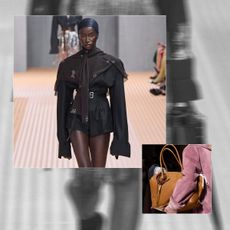 9 Spring Trends Every Fashion Person Will Wear Because of Prada and Miu Miu
9 Spring Trends Every Fashion Person Will Wear Because of Prada and Miu MiuInfluential is an understatement.
By Allyson Payer
-
 The Ultimate Holiday Gift Guide for Finding Exactly What You Need
The Ultimate Holiday Gift Guide for Finding Exactly What You NeedEasy-peasy.
By Nayiri Mampourian
-
 The First Big Drop of Spring 2024 Has Arrived—8 Items I'm Recommending
The First Big Drop of Spring 2024 Has Arrived—8 Items I'm RecommendingThese are the most important buys of the season.
By Kristen Nichols
